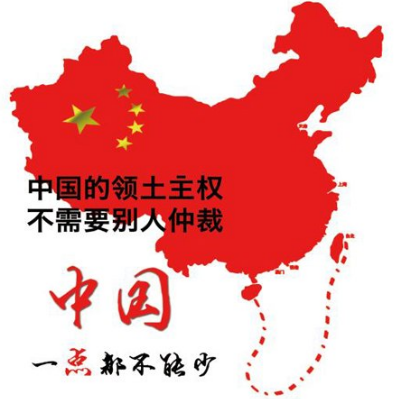Following is the full text of a statement of the Chinese government on China's territorial sovereignty and maritime rights and interests in the South China Sea issued on Tuesday.
To reaffirm China's territorial sovereignty and maritime rights and interests in the South China Sea, enhance cooperation in the South China Sea with other countries,and uphold peace and stability in the South China Sea, the Government of the People's Republic of China hereby states as follows:

I. China's Nanhai Zhudao (the South China Sea Islands) consist of Dongsha Qundao (the Dongsha Islands), Xisha Qundao (the Xisha Islands), Zhongsha Qundao (the Zhongsha Islands) and Nansha Qundao (the Nansha Islands). The activities of the Chinese people in the South China Sea date back to over 2,000 years ago. China is the first to have discovered, named, and explored and exploited Nanhai Zhudao and relevant waters, and the first to have exercised sovereignty and jurisdiction over them continuously, peacefully and effectively, thus establishing territorial sovereignty and relevant rights and interests in the South China Sea.
Following the end of the Second World War, China recovered and resumed the exercise of sovereignty over Nanhai Zhudao which had been illegally occupied by Japan during its war of aggression against China. To strengthen the administration over Nanhai Zhudao, the Chinese government in 1947 reviewed and updated the geographical names of Nanhai Zhudao, compiled Nan Hai Zhu Dao Di Li Zhi Lue (A Brief Account of the Geography of the South China Sea Islands), and drew Nan Hai Zhu Dao Wei Zhi Tu (Location Map of the South China Sea Islands) on which the dotted line is marked. This map was officially published and made known to the world by the Chinese government in February 1948.
II. Since its founding on 1 October 1949, the People's Republic of China has been firm in upholding China's territorial sovereignty and maritime rights and interests in the South China Sea. A series of legal instruments, such as the 1958 Declaration of the Government of the People's Republic of China on China's Territorial Sea, the 1992 Law of the People's Republic of China on the Territorial Sea and the Contiguous Zone, the 1998 Law of the People's Republic of China on the Exclusive Economic Zone and the Continental Shelf and the 1996 Decision of the Standing Committee of the National People's Congress of the People's Republic of China on the Ratification of the United Nations Convention on the Law of the Sea, have further reaffirmed China's territorial sovereignty and maritime rights and interests in the South China Sea.
III. Based on the practice of the Chinese People and the Chinese government in the long course of history and the position consistently upheld by successive Chinese governments, and in accordance with national law and international law, including the United Nations Convention on the Law of the Sea, China has territorial sovereignty and maritime rights and interests in the South China Sea, including, inter alia:
i. China has sovereignty over Nanhai Zhudao, consisting of Dongsha Qundao, Xisha Qundao, Zhongsha Qundao and Nansha Qundao;
ii. China has internal waters, territorial sea and contiguous zone, based on Nanhai Zhudao;
iii. China has exclusive economic zone and continental shelf, based on Nanhai Zhudao;
iv. China has historic rights in the South China Sea.
The above positions are consistent with relevant international law and practice.
IV. China is always firmly opposed to the invasion and illegal occupation by certain states of some islands and reefs of China's Nansha Qundao, and activities infringing upon China's rights and interests in relevant maritime areas under China's jurisdiction. China stands ready to continue to resolve the relevant disputes peacefully through negotiation and consultation with the states directly concerned on the basis of respecting historical facts and in accordance with international law. Pending final settlement, China is also ready to make every effort with the states directly concerned to enter into provisional arrangements of a practical nature, including joint development in relevant maritime areas, in order to achieve win-win results and jointly maintain peace and stability in the South China Sea.
V. China respects and upholds the freedom of navigation and overflight enjoyed by all states under international law in the South China Sea, and stays ready to work with other coastal states and the international community to ensure the safety of and the unimpeded access to the international shipping lanes in the South China Sea.




















